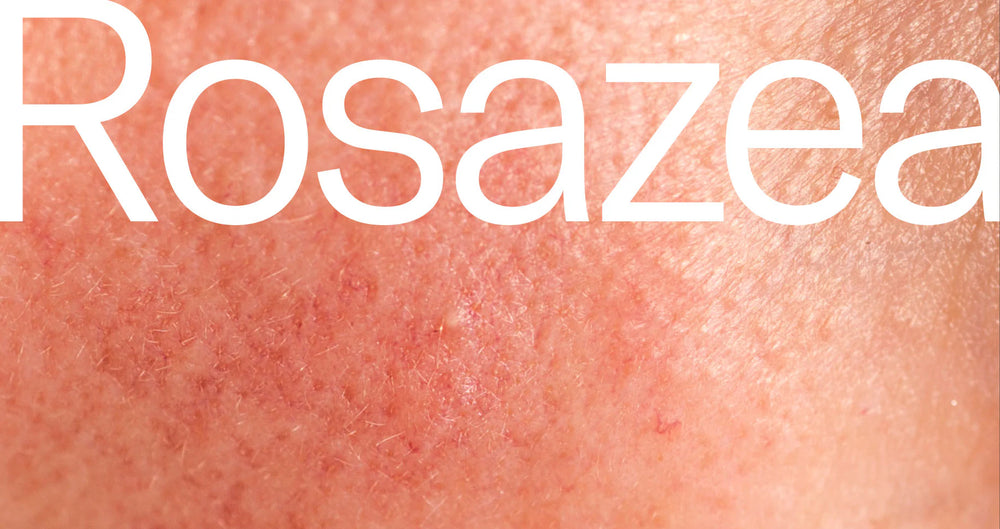
Rosacea
The diagnosis and treatment of rosacea is one of the specialties of Prof. Steinkraus, who is also a member of the German Rosacea Aid.
Rosacea is an inflammation of the skin on the face that can affect virtually anyone of any gender due to a genetic predisposition or genetic factors. Those affected are usually middle-aged, but rosacea occasionally occurs in very young and very old people. Rosacea can occur acutely within a few days, but most often it develops over weeks and months and becomes chronic. The inflammation manifests as redness, small papules and pustules, and occasionally, as the disease progresses, small sebaceous gland growths in the central regions of the face, particularly on the nose, forehead, cheeks, and chin. Rosacea is an inflammatory skin disease that is non-infectious and therefore not contagious. It is excellently treatable. A confirmed diagnosis is a prerequisite for effective therapy.
Rosacea is a non-infectious inflammation of the facial skin that manifests as redness, small papules, and pustules (pimples and pus-filled spots) on the face. These skin changes primarily affect the central areas of the face, such as the nose, cheeks, forehead, and chin. They are almost always asymptomatic, meaning there is no burning sensation, pain, or discomfort.
Rosacea is an acne-like inflammation, but has nothing to do with acne. Acne is an inflammation of the sebaceous glands that begins with blackheads (comedones) and typically occurs in young people during puberty. Because acne is triggered by male hormones (androgens), it primarily affects men, although women (women also have androgens) can also develop severe acne. Acne also affects all areas of the body rich in sebaceous glands, including the face, décolleté, and upper back. None of this is the case with rosacea. Rosacea is usually a disease of the facial skin only, occasionally also affecting the eyes and/or scalp.
Rosacea affects people of all genders, with a slight predominance in women. Symptoms usually first appear between the ages of 20 and 50.
The causes of rosacea are unknown. It is believed that there is a genetic predisposition that favors rosacea.
The direct reasons why rosacea breaks out are unknown. A genetic predisposition alone is not a cause for the disease. Causes of an outbreak can include stress, hormonal factors or even incorrect skin care with products that irritate the skin. What is certain is that rosacea is irritated by events that affect the skin's vascular system, i.e. which are vasoactive. These include excitement and stress or emotionally stressful situations, thermal stimuli such as cold or heat (e.g. saunas), hot or spicy foods, alcohol or cleaning or skin care products that irritate the skin. The sun also generally leads to a worsening of rosacea through heat or by dilating capillaries or blood vessels in the skin. The heat from the sun's rays increases blood circulation in the skin and thus promotes inflammatory processes in the skin.
A relatively unknown but extremely effective adjuvant treatment for rosacea is manual therapy with anti-inflammatory masks containing nicotinic acid, which train the skin's circulatory system. This active ingredient, in combination with certain massage techniques on the facial skin, causes brief, very pronounced redness due to dilation of the skin's blood vessels. After removal of the mask, a reflex constriction of the blood vessels occurs (reflex vasoconstriction), which goes beyond the initial state. As a result, the face is less red a few hours after the medical cosmetic treatment than before the treatment. The effect is impressive and permanently trains the vascular system of the facial skin.
Couperose is a special form of stage I rosacea that never progresses to stages II or III. It is treated in the same way as stage I rosacea. Rarely, rosacea of the eyes (ophthalmorosacea) can be treated only with cleansing rinses and tablets (tetracyclines). Isotretinoin is less effective in this case, but can be used in individual cases. Also rare in rosacea are small, inflamed, reddened or reddish-yellow, occasionally slightly glassy nodules, which represent a special form of rosacea (rosacea granulomatosa). This form has a prolonged, somewhat more persistent course and can usually only be improved with isotretinoin. Another rare special form of rosacea is the severe rosacea fulminans, which must be treated with cortisone and isotretinoin and whose therapy should be carried out exclusively by specialists who are extremely familiar with the treatment of rosacea and the possible side effects of the therapy.
During acute flare-ups, rosacea must be treated as described above. However, during symptom-free intervals, rosacea-prone skin can be gently cleansed and cared for normally like any other skin, ensuring that the skincare is free of irritating ingredients, especially aggressive emulsifiers. This should be the case with most modern, carefully formulated skincare concepts. Likewise, during symptom-free intervals, rosacea-prone skin usually tolerates serums containing vitamin A, vitamin C, and hyaluronic acid well. However, as always, vitamin A should be applied cautiously and gradually, and then only in the evening.